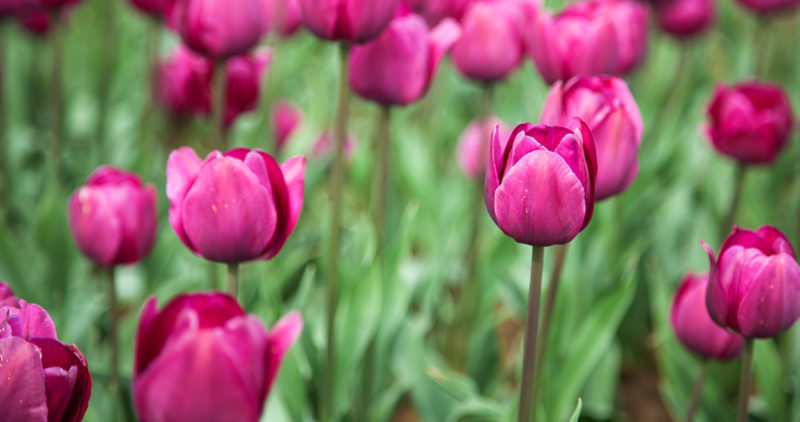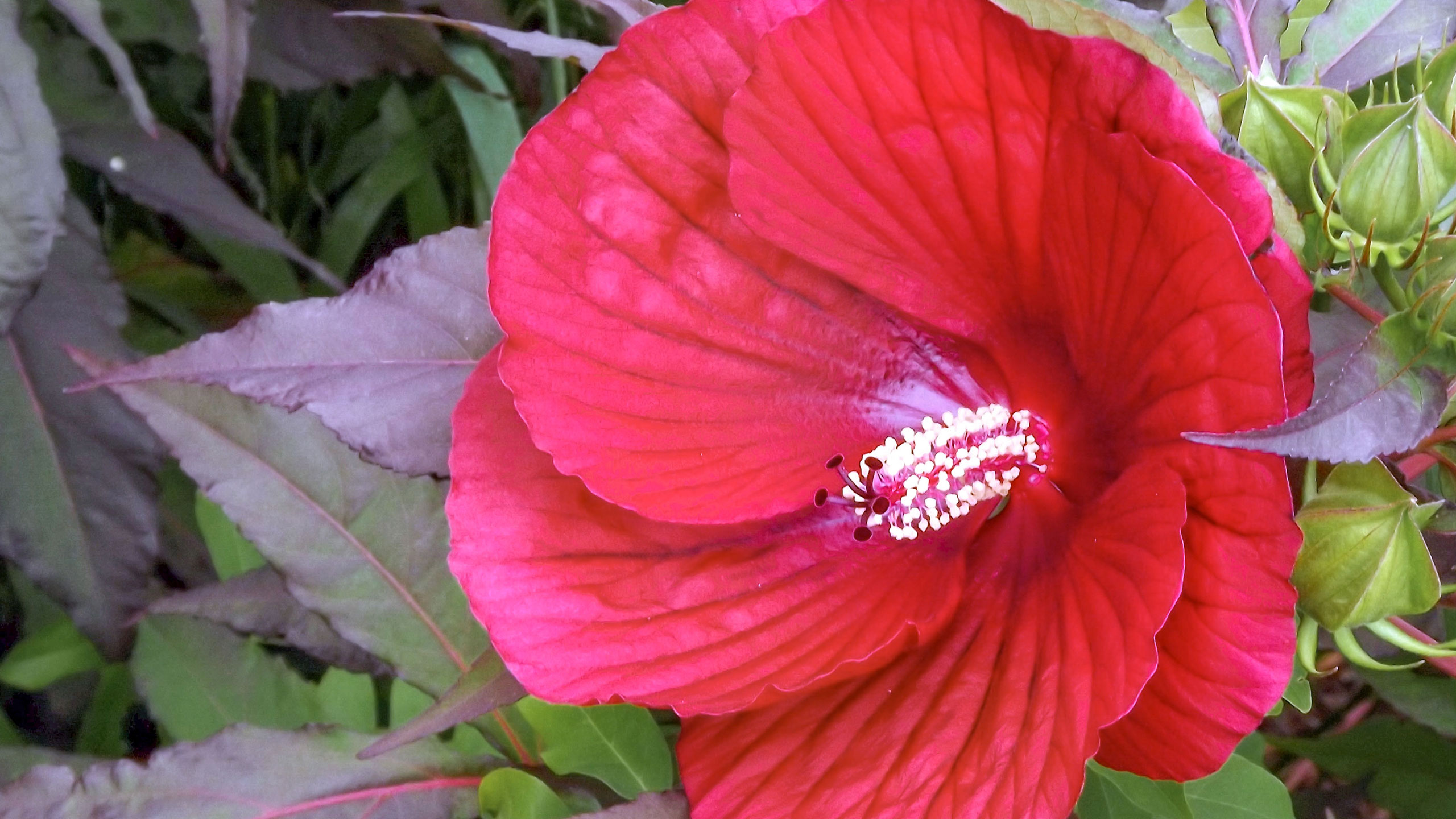
Hardy hibiscus likes to sleep in.
That’s something our Hardy Plants team will tell you right away when asked about this gorgeous, but a bit tardy, perennial. In early spring, as most other hardy shrubs and perennials give us new leaves and buds as encouraging signs of life, hardy hibiscus keeps hitting the snooze button, often until June. As a result, the month of May can be an agonizing month for hardy hibiscus gardeners. Did it die? Will it come back? But by the time summer rolls around, they know the wait was worth it.

Hardy hibiscus belongs to the same genus as the tropical hibiscus and the hardy flowering shrub, rose of Sharon. The family relationship is obvious when you see the open, round, tropical-style flowers of all three plants, reminiscent of a vacation in Hawaii. But there are also differences. Hardy hibiscus survives the winter outside to return in the spring (unlike tropical hibiscus), but it dies back to the ground each year, starting over again with new stems the following year (unlike rose of Sharon).
Hardy hibiscus is simply stunning in the late summer. It’s often called “dinner plate hibiscus” because, in some cultivars, flower diameters can reach over 6 inches across. (If not always as big as dinner plates, then at least large saucers.) Blooms come in shades of pink, raspberry, and deep red. Individual flowers last just one or two days, but they come in succession, so you’re never without a show from July until frost. You’ll even see hummingbirds enjoy these large, colorful flowers – plus other pollinators like bees and butterflies.
Hardy hibiscus loves the sun and most especially the heat, which explains its habit of skipping early spring and waiting until June to get out of bed. After finally emerging, it catches up quickly, reaching heights of three to five feet, depending on the cultivar. It makes a wonderful backdrop for sunny flower beds, standing tall behind other late-summer bloomers like coneflowers, coreopsis, and sedum. Just remember that when May arrives, don’t give up on it too early, thinking it didn’t survive the winter. Show-stopping beauty like this simply can’t be rushed, you know.


